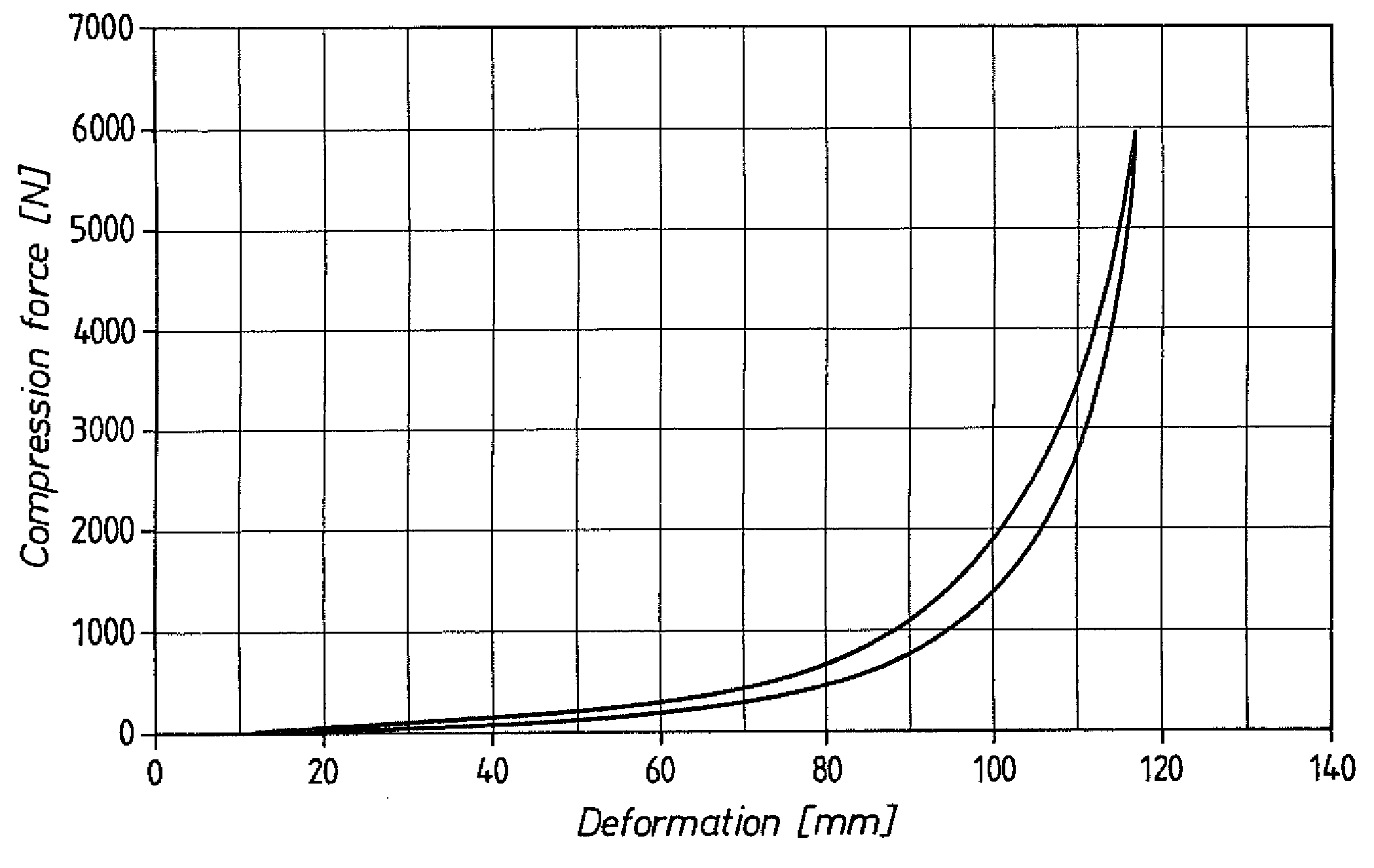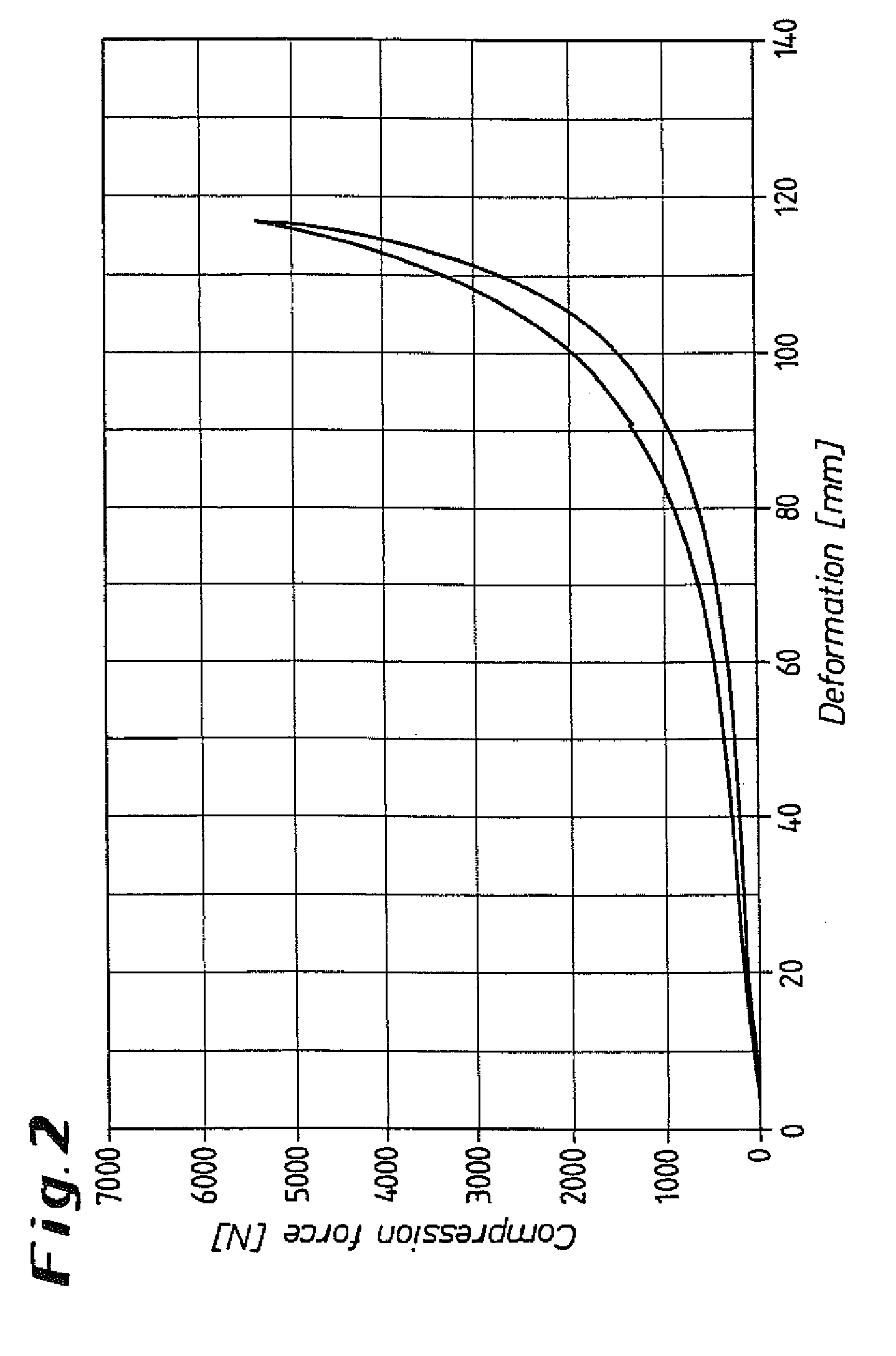Process for the production of cellular polyurethane (PUR) casting elastomers from storage-stable 1,5-naphthalenediisocyanate (NDI) prepolymers
a technology of cellular polyurethane and prepolymer, which is applied in the direction of transportation and packaging, multiple wheel assembly, layered products, etc., can solve the problems of health and safety aspects of work, the stability of 1,5-ndi-based prepolymers is limited, and the prepolymer cannot be stored
- Summary
- Abstract
- Description
- Claims
- Application Information
AI Technical Summary
Problems solved by technology
Method used
Image
Examples
example 1
Production of an NDI-Based, Storage-Stable NCO Prepolymer Based on Capa 1
[0094]100 parts by weight of a poly-ε-caprolactone started with neopentyl glycol and with an OH number of 79 mg KOH / g was dehydrated and stirred at 127° C. with 28.75 parts by weight of Desmodur® 15. The reaction temperature rose to 139° C. after 11 minutes. The reaction mixture was cooled to 65° C. in 10 minutes. The NCO content was 4.14 wt. %; after 24 hours at 65° C. the NCO content was 4.08%. The prepolymer (viscosity at 100° C.: 1650 mPas) was stored at room temperature.
example 2
Production of a Cellular Casting Elastomer from NDI-Based, Storage-Stable NCO Prepolymer
[0095]114.4 parts by weight of the NCO prepolymer from Example 1 stored for 45 days at room temperature were heated to 100° C. and mixed with 1.2 parts by weight of castor oil (mixture A).
[0096]Mixture B consists of 10 parts by weight of Vulkollan® 2001 KS, 1.65 parts by weight of additive SV (50% aqueous solution of a fatty acid sulfonate, obtainable from Rheinchemie) and also 0.02 part by weight of cyclohexyldimethylamiine.
[0097]100 parts by weight of mixture A (ca. 90° C.) and 10.09 parts by weight of mixture B (ca. 45° C.) are mixed at 1800 r.p.m. in a low pressure machine, poured into closed moulds, and then removed from the moulds. The processing conditions and the measurement results are shown in Table 1.
TABLE 1Mixture (A) [parts by weight]100 Mixture (B) [parts by weight]10.09Moulded articleDensity500 kg / m3Removal from the mould after50 MinMoulding temperature 90° C.Post-heating tempera...
example 3
Comparison
PUM
| Property | Measurement | Unit |
|---|---|---|
| temperature | aaaaa | aaaaa |
| temperature | aaaaa | aaaaa |
| temperature | aaaaa | aaaaa |
Abstract
Description
Claims
Application Information
 Login to View More
Login to View More - R&D
- Intellectual Property
- Life Sciences
- Materials
- Tech Scout
- Unparalleled Data Quality
- Higher Quality Content
- 60% Fewer Hallucinations
Browse by: Latest US Patents, China's latest patents, Technical Efficacy Thesaurus, Application Domain, Technology Topic, Popular Technical Reports.
© 2025 PatSnap. All rights reserved.Legal|Privacy policy|Modern Slavery Act Transparency Statement|Sitemap|About US| Contact US: help@patsnap.com



